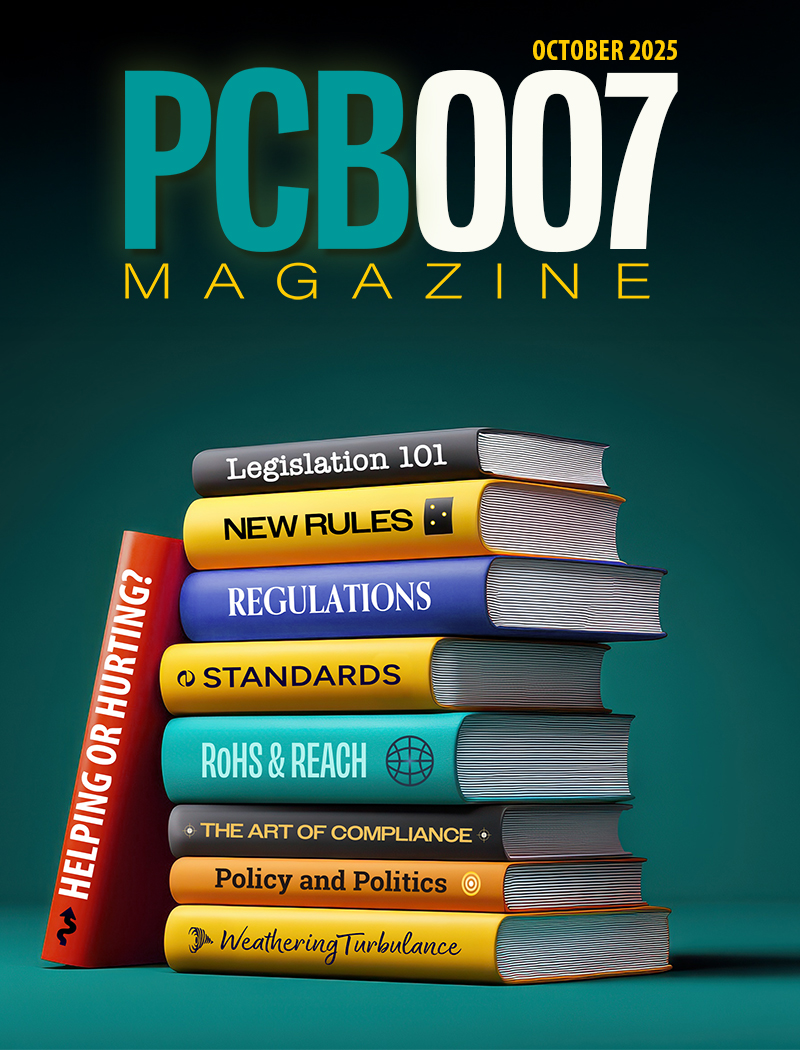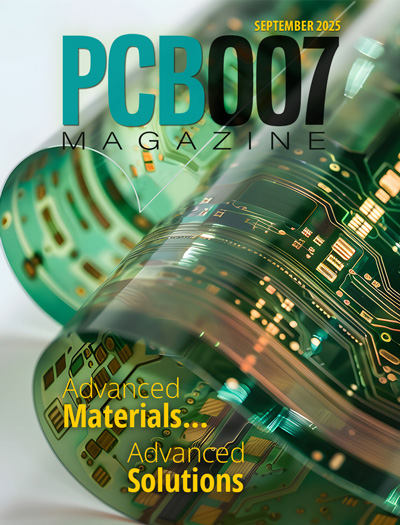-

- News
- Books
Featured Books
- pcb007 Magazine
Latest Issues
Current Issue
The Legislative Outlook: Helping or Hurting?
This month, we examine the rules and laws shaping the current global business landscape and how these factors may open some doors but may also complicate business operations, making profitability more challenging.

Advancing the Advanced Materials Discussion
Moore’s Law is no more, and the advanced material solutions to grapple with this reality are surprising, stunning, and perhaps a bit daunting. Buckle up for a dive into advanced materials and a glimpse into the next chapters of electronics manufacturing.

Inventing the Future With SEL
Two years after launching its state-of-the-art PCB facility, SEL shares lessons in vision, execution, and innovation, plus insights from industry icons and technology leaders shaping the future of PCB fabrication.
- Articles
- Columns
- Links
- Media kit
||| MENU - pcb007 Magazine
Estimated reading time: 1 minute
Point of View: Unleashing the Power of Teams
Cause & Effect
Group dynamics, simply stated, are the forces at work that affect how individuals interact in a team environment, based on such things as their experiences, culture, personality, and social skills. There is a direct correlation between continuous improvement and operational improvement, and improvement teams are arguably the most effective continuous improvement vehicle available to an organization. Providing formal group dynamics and team-building training to an organization’s management will increase the effectiveness of any improvement program. The most important role is that of the facilitator; a highly-skilled facilitator will make or break any team. Thus, developing a core of highly-skilled facilitators is a critical task to maximize the power of teams for any organization.
Team Roles
Depending on the task at hand, teams have a wide variety of needs and members should be selected to fill the appropriate roles. Put any group of people together for any length of time and you quickly begin to see individuals assuming various roles naturally. But when structuring a team to accomplish a particular task, highly-effective teams are the ones where the roles have been matched with particular member strengths during the selection process.
Editor's Note: This article originally appeared in the May 2013 issue of The PCB Magazine.
More Columns from The Right Approach
The Right Approach: Electro-Tek—A Williams Family Legacy, Part 1The Right Approach: Get Ready for ISO 9001 Version 6
The Right Approach: ‘Twas the Night Before Christmas (Harley-style)
The Right Approach: I Hear the Train A Comin'
The Right Approach: Culture Change is Key to a QMS
The Right Approach: Leadership 101—Be a Heretic, Not a Sheep
The Right Approach: Leadership 101—The Law of Legacy
The Right Approach: Leadership 101: The Law of Explosive Growth


